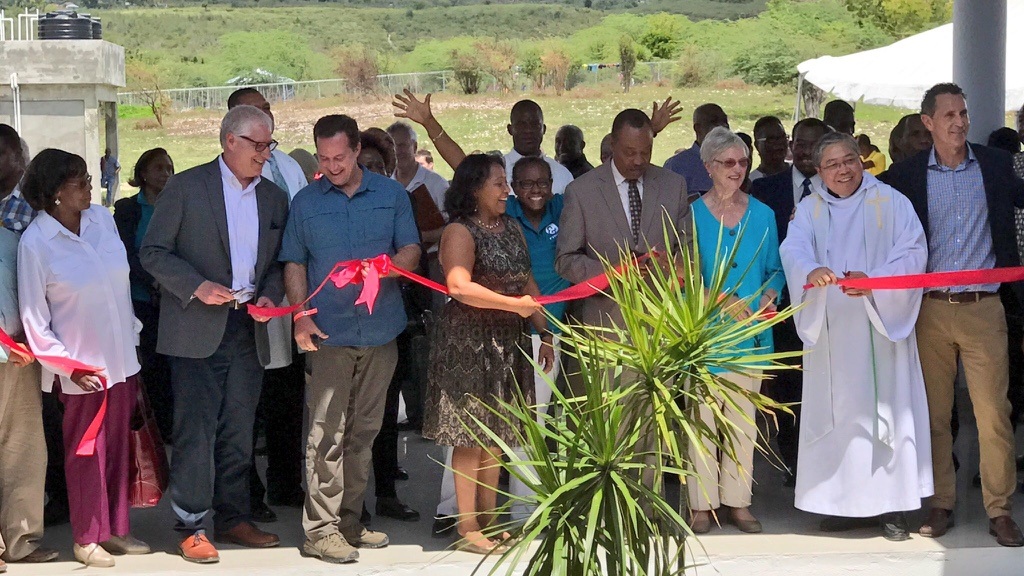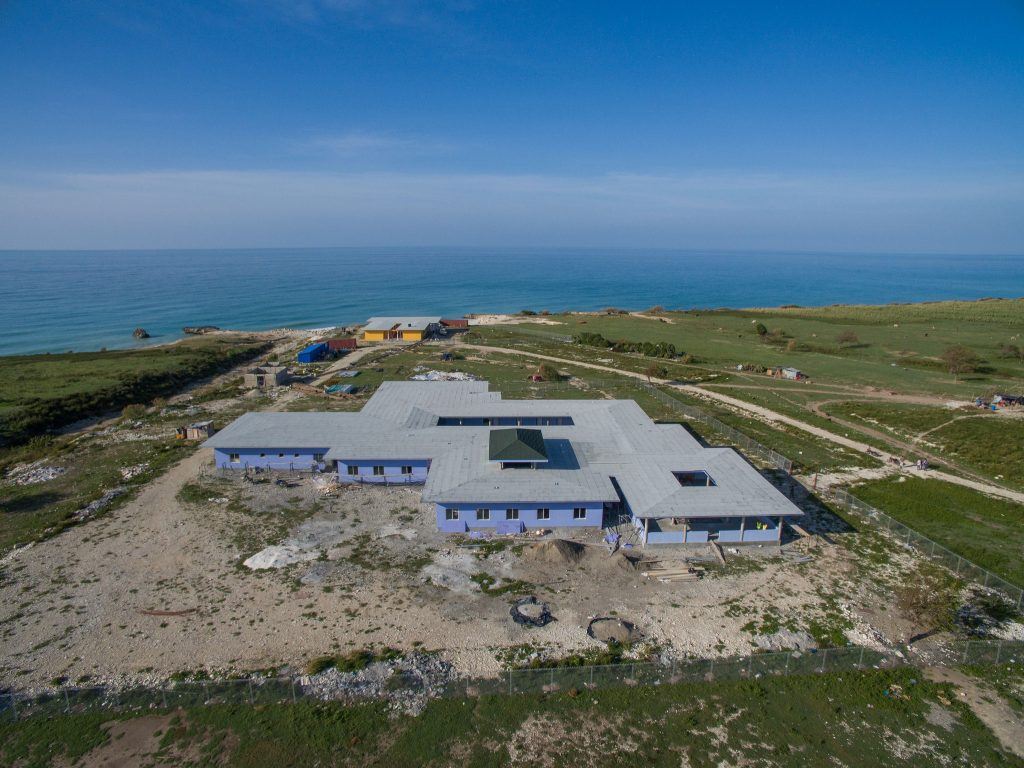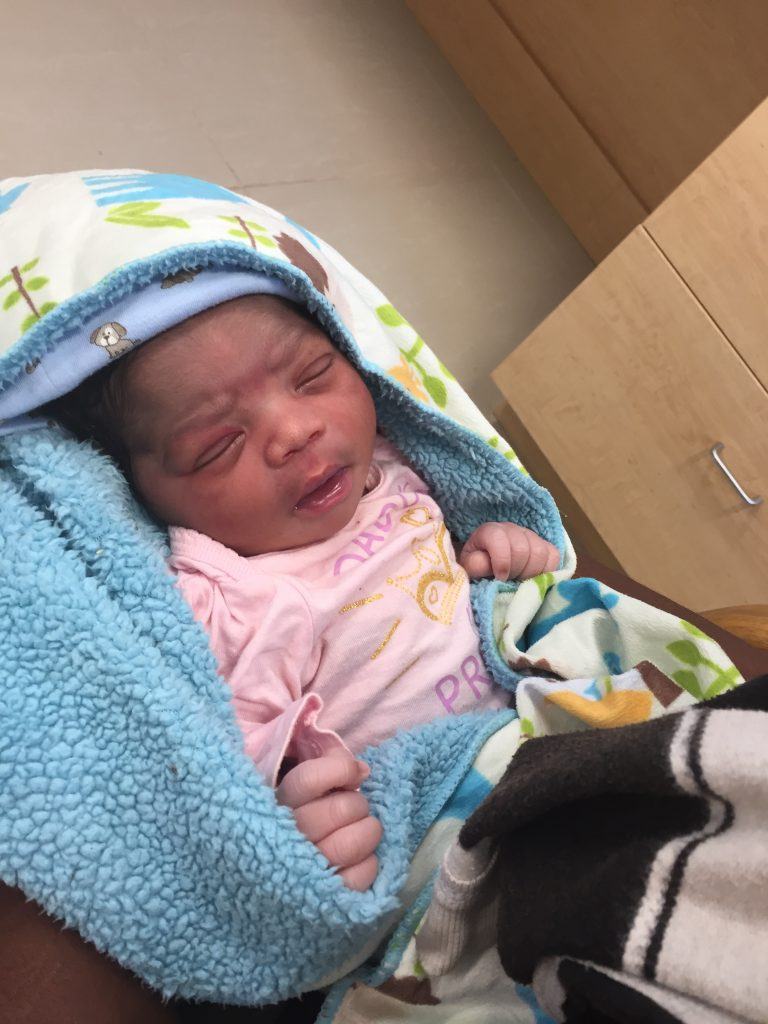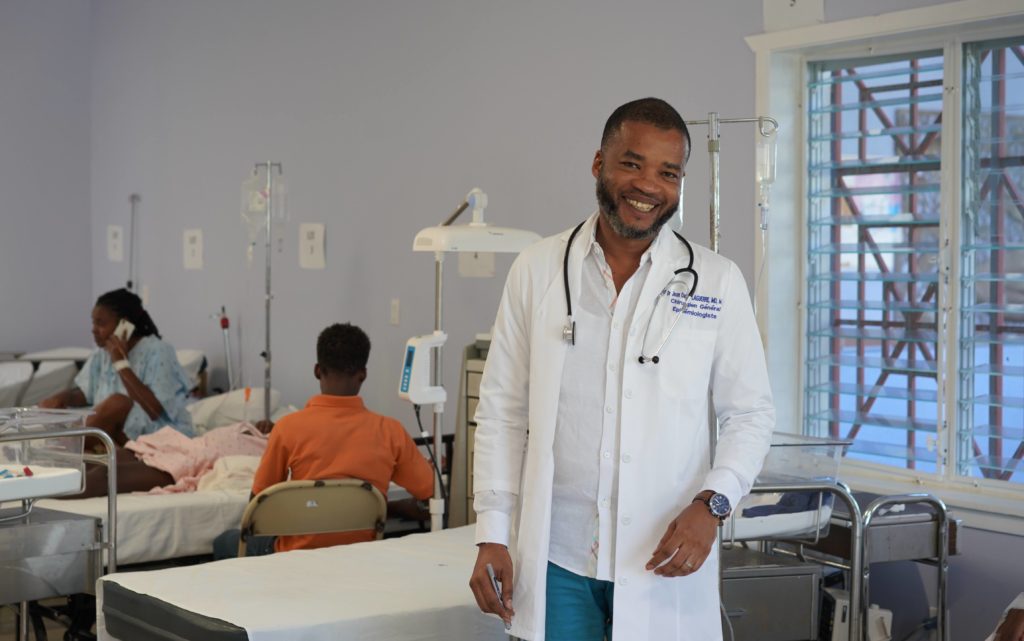Knowing When To Act: A Hospital in Haiti

Dr. Dianne Jean-Francois is the country director of CMMB Haiti and has been for nearly two decades. Her passion and dedication to the Haitian people is an inspiration to us of all. Growing up in Haiti with her grandparents, Dr. Dianne spent her summers in the United States with her parents. She chose to pursue her education in Haiti, eventually becoming a pediatrician. Later, her drive to do more brought her back to the U.S. where she received her MPH from John Hopkins University.
Dr. Dianne is a remarkable woman and a valued member of our CMMB family. She has been at the front-lines of crisis, both natural disasters and political turmoil, providing direct emergency aid to those most impacted. She was also the driving force behind the construction of the Bishop Joseph Sullivan Hospital. We recently sat down to talk with Dr. Dianne about her time with CMMB and what’s next for the hospital and Côtes-de-Fer.
What made you leave your private practice?
Before I joined CMMB, I was working with patients in my role as a pediatrician. I was having an impact on individual patients and that was positive, but I wanted to do something more, something that had an impact on more people. I decided to shift to the prevention side, to public health. I wanted to work with communities to educate people so that they could take measures to protect their health, so I went back to school!
CMMB is so lucky to have you. Tell us, why did you choose CMMB?
I liked that CMMB was focused on tackling the social determinants of health, the health promoting factors found in one’s living and working conditions, including the distribution of income, influence, and power that influence the risk for a disease. I was especially excited with the strategy refresh in 2014 when CMMB refocused its efforts to focus on women and children. In under resourced communities in Haiti, women and children face so many challenges and they are always the most vulnerable population; HIV, malaria, malnutrition, and so many other health issues disproportionately affect them. And knowing that the communities I work in continue to face challenges every day, pushes me to do more.
Let’s talk about the Bishop Joseph Sullivan Hospital – some say, your crowning achievement with CMMB so far. Tell us what it meant when the doors opened in March 2017?
I remember thinking, “Finally. Finally this is happening!” CMMB’s connection to Haiti started over 100 years ago, with our founder Dr. Paluel Joseph Flagg visiting and working with lepers, something we continue with today. I want CMMB to be known by the communities, I want people to know we are here and are committed to making sustainable change. The BJSH was our way to deliver this message.
The BJSH will serve the community and change lives for years and years, forever I hope. Our vision is to not only to create access to healthcare but to create the demand and build trust for healthcare, and I think that is the greatest achievement of all of this. It really is a beacon of hope in the community.
In 2018, 8,951 patients were treated at the BJSH, including the delivery of 167 healthy babies!
Tell us a little about what drew you and CMMB to commit to this community?
It was after a major hurricane, and Côtes-de-Fer was among the hardest hit. We knew we had to go and be part of the emergency response. A group of us traveled there together. The journey to reach those affected was a nightmare. It took four hours from the main road to even reach the communities in most need. When we reached the healthcare center, we found it flooded – it was like a pool, completely filled with water and mud. I just remember thinking, “We’ve got to help the people here.” And that’s really how it all began.
What was access to healthcare like when you first arrived in Côtes-de-Fer?
There wasn’t much access at all! There was the little healthcare center in the community – the one found flooded- but it lacked almost every resource, including trained healthcare workers. But this is not uncommon in remote parts of Haiti, access to quality healthcare is the norm. That little clinic is still there today but operating at a much larger capacity with support from us and other partners.
Let’s talk a little about the community and it’s attitude toward change and the role community health workers play in all of this.
Change as you know takes time. Remember that for the people living here there was really no healthcare to speak of and you don’t really value something that you have never had. When people seek care at a health facility without trained personnel, without medicines or medical supplies, they don’t receive care at all. That leads to a lack of trust in healthcare, people don’t see the value. So a big part of our role is trying to rebuild that trust.
Our first step was to find people in the communities willing to take a leadership role in their own heath and the health of their communities. How do you do this? You provide valuable training. You see, community health workers have the possibility of changing lives because their voices resonate. They are affected by the same challenges of extreme poverty as the people they serve – their relatives, friends, and neighbors. And they are motivated to improve their own lives and the lives of their communities, taking the initiative to become trained leaders and to help others live healthier and more dignified lives. CHW’s like Kerna! They go into their communities, they educate, and they work hard to get people to understand why healthcare is important and why they should seek care at a health center.
For example, part of their role is knowing who is pregnant in their community and to motivate these women to seek antenatal care and to understand why it is important for their own health and for the health of their baby to deliver in the hospital. This mindset shift takes time. We are still working to change every attitude, it is not something that happens over night, but we are making progress.
Community attitude is one of the reasons why the quality of care and aesthetic at the hospital are so important. We have to make sure it is clean, and that community members feel comfortable. We have to make sure we have trained medical staff, medicines, and medical supplies. People have to feel like they are in safe hands.
You know, one of the most successful ways of building trust, apart from providing excellent care, is to encourage community members who have received quality care to share their experiences. This way the change moves from just one person to a group of people. What I mean is, if a community health worker talks to one person, that person might go on to tell their friends and family about what they learned. This process helps to change cultural beliefs.
So, this hospital and its hard working people are really important to this community.
This hospital means everything to the community and they are so proud of it. It is an achievement to have it. It is all they have and it unites the entire community.

What’s next for the hospital?
We are looking to install a solar system because we need sustainable, renewable energy to protect the environment. That is our next step. We are also looking to start a community center. The community center will help us to organize some activities on a large scale. It will have education opportunities but also economic activities. For example, women will be invited to learn how to embroider or make crafts. The idea is that they will be able to sell what they create.
We are starting to look for funds to invest in our education initiatives. We are going to start aiming for higher education opportunities like accounting, plumbing, mechanics, nursing, etc.
Someone once said, “Ask anyone who knows her whether this crowning achievement will be the end of her plans for Haiti and you’ll get an equally clear answer: Not at all” So, What are your other plans, what are your hopes for Haiti?
We have a commitment. We are not only working for the healthcare, we are working for the well-being of that community. If we can have an impact on the economy that would definitely change so much for the community. This is one of the reasons why I target agriculture so much. I want the economy to change and give people opportunities. The government has spoke of resorts going up in Côtes-de-Fer. If it actually happens it will mean more than just new development. Hotels will need food to feed their visitors. We could start by producing food for the community and and then go on to produce a surplus to sell. This will change the economy and the community will finally be able to move on from poverty.
If I can find someone to invest in us for agriculture, that is my next dream.



